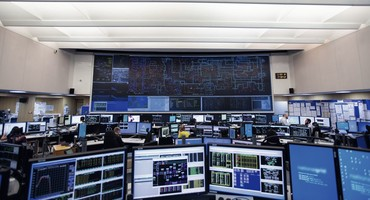A new faster-acting frequency response mechanism to be launched early next year marks the latest development in National Grid Electricity System Operator (ESO)’s suite of services for managing the flow of energy around the grid.

The new suite, whose flagship dynamic containment product is an evolution of the ESO’s enhanced frequency response (EFR) tool, has been shaped following two years of consultation with industry.
The ESO’s announcement comes as it publishes its new product roadmap for response and reserve, which sets out how its ancillary services and markets for managing frequency will develop as it transforms the grid to be able to operate with zero carbon by 2025.
Frequency response is the automatic change to generation or demand on the grid to counteract and contain changes to the system frequency, which the ESO must keep within one percent of 50Hz. It’s made possible by buying response from the energy market to hold ready for use if needed.
Dynamic containment will be among the fastest of the ESO’s frequency response services, capable of responding within one second to deviations in frequency, and – when fully developed – able to draw on a wider and more diverse range of technologies and generation providers.
The dynamic and rapid management of frequency on a near real-time basis is becoming increasingly important as the ESO operates a system with more non-synchronous renewable energy generation, meaning less inertia – inertia being the measure of how quickly frequency will change when there is a system imbalance.
The new product is a step up in capability from the EFR, and – while open to battery providers initially – will in the longer term widen the range of possible providers, allowing them to offer both high-frequency and low-frequency response.
In a trial which also forms part of its product roadmap, the ESO debuted a new frequency response auction platform last week, developed with auction partner EPEX SPOT to improve its ability to procure dynamic frequency response closer to real-time. On the auction’s opening day on Friday, a total of 10,284MW was traded on the platform.


